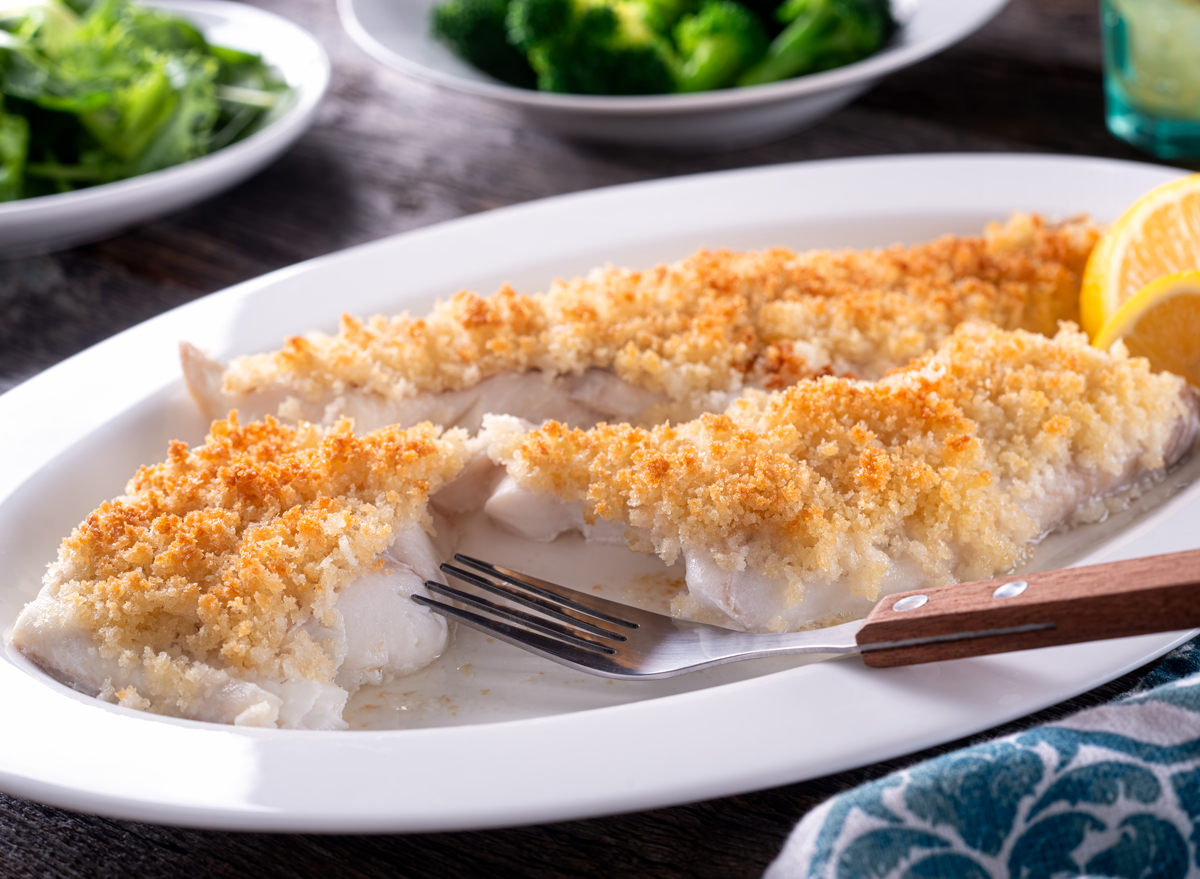The #1 Best Fish to Eat, According to a Dietitian

There’s no disputing that eating fish is one of the best things that you can do to support your overall health. From reducing your risk of type 2 diabetes to supporting heart health, eating these treasures of the sea comes with some unique benefits.
As a registered dietitian-nutritionist, I’m an “equal opportunity” fish lover. All varieties are chock-full of important nutrients and fit into most healthy lifestyles. If I had my way, every person I came in contact with would be enjoying a piece of fish 2-3 times a week. Yes, every week.
However, once you dig into what each variety of fish offers, some choices are slightly better than others. And while salmon continues to reign supreme in the seafood choice department for dietitians and consumers alike, I tend to lean on a variety of fish that may come as a surprise.
Alaskan pollock is my go-to fish of choice, and in my humble opinion, it’s the #1 best fish to eat. Between the affordable cost, mild flavor, nutrients, and lower carbon footprint and mercury content, Alaskan pollock is tough to beat. Below, learn more about why this underrated fish is at the top of my list. For more on how to eat healthy, don’t miss the 7 Healthiest Foods to Eat Right Now.
Alaskan pollock is an affordable fish with a mild flavor.

There’s no denying that popular fish choices like salmon are excellent proteins to enjoy on your dinner plate. But, for some, these choices may have a strong fishy flavor that’s less-than-appealing to the non-fish lover. Plus, the cost can be a barrier to enjoying some beloved varieties of fish every single week.
Alaskan pollock has a more mild taste, and it can be a more economical fish choice, making it much more appealing to some folks. If a person is trying to incorporate more fish into their diet but is typically a “meat and potatoes” person, sticking to less powerful-tasting fish (like Alaskan pollock) is a safer bet for acceptance.
Plus, because of the taste, Alaskan pollock can easily be incorporated into a wide variety of dishes because it naturally adopts the flavors of marinades and spices.
Alaskan pollock is a nutritional powerhouse rich in vitamins and minerals.

Whether you realize it or not, Alaskan pollock is a fish that’s easily accessible and consumed quite frequently. From those old-school fish sticks that you ate as a kid to craveable fish tacos to even the classic McDonald’s Filet ‘o Fish sandwich, Alaskan pollock is found in many products and dishes—you just might not have realized it.
As long as you’re avoiding fried varieties of this fish, you can expect to gain from the myriad of benefits that it offers. Alaskan pollock is loaded with key vitamins, minerals, and antioxidants—including vitamin B12, selenium, protein, and niacin, to name a few.
Plus, one serving of Alaskan pollock provides 10% of your daily vitamin D and potassium needs—two nutrients that many people don’t eat the required amount of on a daily basis. To learn more about why you need to consume adequate levels of vitamin D, check out these 5 Amazing Benefits of Vitamin D, According to Experts.
Alaskan pollock is a great source of omega-3 fatty acids.

But the shining star of Alaska pollock is the omega-3s that it provides. Having a higher intake of marine omega-3 fatty acids—DHA and EPA—is linked to some very appealing outcomes, including a 13% lower risk for all-cause mortality, as well as a lower risk for death due to cancer, cardiovascular disease, and other causes combined.
Alaskan Pollock contains between 50-1,000 milligrams (mg) of omega 3s per serving. Though there’s no set recommended dosage of DHA and EPA that a person needs to take in, it’s recommended that the total intake of omega-3 fatty acids is between 1,100 mg and 1,600 mg per day.
A recent meta-analysis evaluating 40 clinical trials and published in Mayo Clinic Proceedings showed that an extra 1,000 mg of EPA and DHA per day further decreased the risk of cardiovascular disease by 5.8% and heart attack by 9.0%—meaning that when specifically looking at DHA and EPA, it appears that more intake offers more benefit.
Alaskan pollock has a low mercury content.

There’s no doubt that eating fish is good for your overall health, but there’s one “watch-out” when choosing seafood—some varieties can contain high levels of mercury. When consumed in high quantities, this metal can cause serious health problems, especially for pregnant people and children. (See: One Major Side Effect of Eating Fish, Says Science)
Pollock is on the list of the fish options with the least amount of mercury, making it one of the safest fish choices to enjoy throughout its life cycle.
Alaskan pollock has a lower carbon footprint.

Rightfully so, there’s a concern about making sustainable choices when selecting fish. Thankfully, Alaskan pollock is a smart seafood choice because it’s responsibly harvested and sustainably managed under U.S. regulations.
Choosing sustainable seafood choices means choosing fish that are caught in a way in which our oceans can maintain populations (aka no over-fishing and depleting supply).
Alaskan pollock is one of the best fish choices to enjoy.

We can all benefit from eating more fish to help us live a healthier life. While all fish can offer some health benefits, opting for lower-mercury and more sustainable choices is something to strive for. And opting for Alaskan pollock instead of higher-mercury choices like Ahi tuna or swordfish can be a delicious swap that’s both easy and economical.
So, whip up some pollock fish tacos or prepare a decadent pan-roasted pollock dinner. Your health and your palette will thank you for it. For more ways to improve your diet, consider adding any of these 100 Healthiest Foods on the Planet to your fridge and pantry.